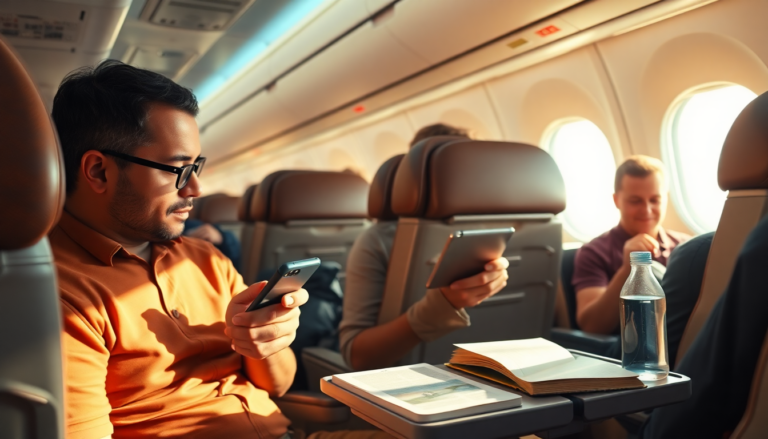Argomenti trattati
As you settle into your seat and prepare for your journey, the flight crew kindly reminds you to either power down your devices or switch them to airplane mode. This simple yet crucial step, now a staple in our flying experience, often raises eyebrows. Have you ever wondered why we can keep our phones on—albeit disconnected—during takeoff? Let’s dive into the intricacies of this essential flying protocol.
How Airplane Mode Works
Airplane mode is a handy feature that lets you keep your mobile device powered on while disabling all wireless connections. Essentially, this means no calls, texts, or mobile data access. But don’t worry—you can still enjoy your favorite music and videos downloaded before the flight. The core of this request is all about safety; electronic devices could potentially interfere with the aircraft’s navigation systems during those crucial flight phases.
One common misconception is that a few active smartphones could lead to catastrophic failures mid-flight. In reality, while there’s no evidence supporting this fear, the request for devices to be in airplane mode helps ensure a smooth operational environment. Multiple devices can create annoying static that disrupts communication between pilots and air traffic control. Who wants to risk missing vital instructions because of a buzzing phone?
Moreover, imagine if unrestricted phone usage were allowed—akin to riding a train or bus where constant chatter fills the air. It could drown out critical safety announcements made by the crew, which are essential for passenger awareness, especially during takeoff and landing. The last thing you want is to miss important information because someone’s engrossed in a loud phone conversation!
Regulatory Framework and Evolving Guidelines
The European Union Aviation Safety Agency (EASA) has allowed the use of electronic devices throughout all flight phases since 2014, as long as they’re in airplane mode. Each airline can set its own policies regarding device usage; many permit the activation of Wi-Fi or Bluetooth, but not cellular data. Isn’t it interesting how regulations can vary so much across airlines?
In the United States, similar regulations are upheld by the Federal Aviation Administration (FAA), which prohibits the use of devices that transmit signals during flight unless they’re in airplane mode. Interestingly, Europe has made strides to relax these restrictions compared to the U.S. In 2022, the European Commission even approved the use of 5G devices on commercial flights, although airlines are gradually implementing it.
To facilitate in-flight internet access, airlines must equip their aircraft with specialized devices known as “pico-cells.” These nifty devices allow passengers to connect to the satellite network without interfering with the frequencies used by flight personnel, ensuring a seamless communication experience. It’s fascinating how technology plays a role in our flying comfort, isn’t it?
The Takeaway: Embracing Airplane Mode
Understanding the rationale behind keeping devices in airplane mode during takeoff and landing can truly enhance your flying experience. It’s not just about compliance; it’s a collective effort toward ensuring safety and comfort in the cabin. So, as the flight crew guides you through the process, remember their words: “Relax and enjoy your flight.” With this knowledge in hand, you can board with confidence and peace of mind.

